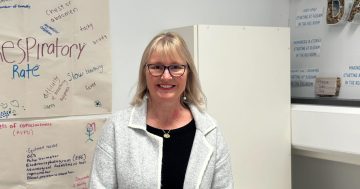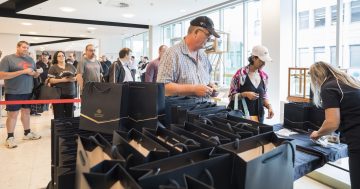Judy Skatssoon* says the Internet of Things could become a powerful tool for helping older Australians remain in their own homes for longer.

Photo: Milkos
Walking sticks that monitor a person’s location and movements, smart bottles that dispense exactly the right dose of medication at exactly the right time, devices that send carers information about clients’ health data, eating and sleeping patterns in real time.
Welcome to the Internet of Things (IoT) in aged care.
The IoT is about empowering objects with sensors and computing capabilities to collect information from people and their environment and transfer this data in real time, says researcher Sami Alkhatib.
Mr Alkhatib, a PhD student from the University of Melbourne, is investigating the IoT and its potential solutions for older Australians.
While it’s unlikely to ever replace the need for home carers, the IoT could become a powerful tool in helping older Australians remain in their homes for longer.
Speaking to Community Care Review, Mr Alkhatib said the dual capability of the Internet of Things to monitor and transfer data can help carers monitor older people who may face challenges living independently but do not want to move into residential care.
“There are many things they can employ the Internet of Things to monitor,” Mr Alkhatib said.
“For example, they can monitor calorie intake per day, number of steps per day, number of sleeping hours per day, if they go to the bathroom, if they go to the kitchen, whether they use the stove, whether they leave the house.”
“Some devices they can wear, for example, if they want to measure blood pressure or sugar levels in the blood,” Mr Alkhatib said.
“They can use the Internet of Things in any object; it’s a matter of design, how to deploy the right technology for the right object.”
Mr Alkhatib says at present the Internet of Things is primarily used by family members, but he believes in the future the technology will become increasingly adopted by healthcare professionals and care providers.
“Instead of moving people to a care facility, there will be a monitoring system in their home, so if they notice anything unusual with their data patterns it will give them an indication that they need to visit and check on them,” he said.
The next frontier, he says, is employing machine learning and artificial intelligence (AI).
“You could have objects with AI to help make decisions,” he says.
“For example, a smart bottle that will remind you when you have to take [medication] and then dispense it in the correct dose.”
But he acknowledges there are downsides to the technology, including intrusiveness and privacy issues.
“Privacy is a big, big concern and I believe there still needs a lot of work to be done in this field,” Mr Alkhatib said.
“What happens to the data, how do they use it?”
“Is it safe, would there be hacking?”
“Would it be used in a way it shouldn’t be used?”
* Judy Skatssoon is a health, disability and aged care journalist and Editor at Community Care Australia. She tweets at @judy_skatssoon.
This article first appeared at www.australianageingagenda.com.au.











